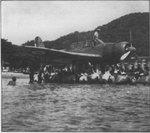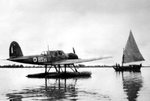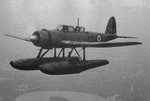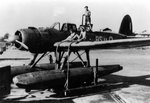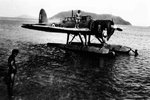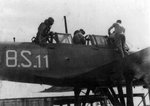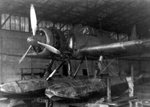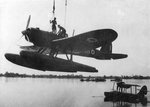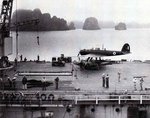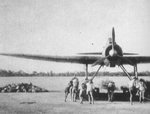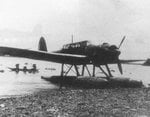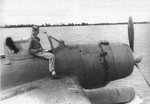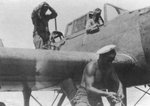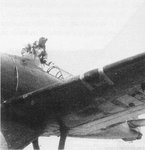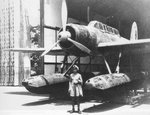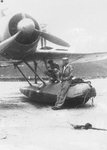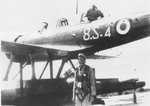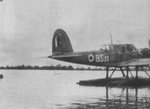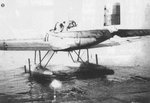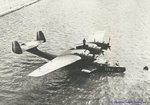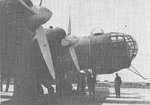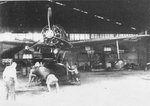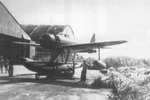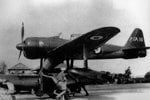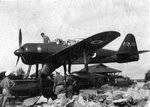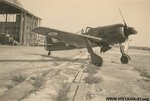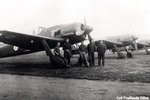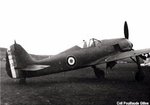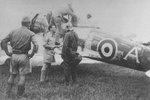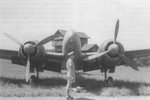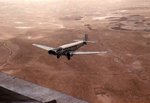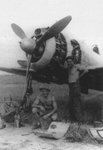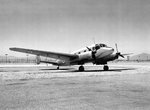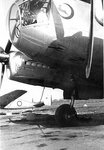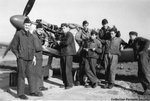Soon after the close of the Second World War, French forces in Indochina found themselves with out air support. Pending the arrival of aircraft transferred from France, and ex-British Spitfires, attempts were made to press into a service a number of war-weary Japanese aircraft. Although there were numerous Japanese airstrips located throughout Indochina, only a handful of serviceable front-line modern aircraft were located. For the most part, these aircraft performed second-line duties with the French, as transports and liason aircraft. The notable exceptions were the Nakajima Ki.43 Oscars, which formed the backbone of two fighter squadrons until their replacment with Spitfires. It appears many of the aircraft were in relatively poor condition, and in the unfamiliar hands of French pilots the attrition rate was high, with at least two aircraft being lost during their only flights! Though most aircraft lasted only until 1946, it is likely that a few soldiered on in French hands until 1949.
Photographs of these few aircraft are relatively rare. Those that I have seen depict a Jake and a Rufe. These show the aircraft in standard Japanese colour schemes of dark green over grey. Note that the cocardes on the Rufe appear very large, possibly sized to cover the hinomarus in these positions. The cocardes in the Rufe photo actually look more like RAF roundels, however this may be due to the use of orthochromatic film, or it is possile that this photo actually depicts the aircraft before its hand over to the French from ATAIU-SEA (Allied Technical Aircraft Intelligence Unit - South East Asia, if I recall correctly). It appears that most if not all of the aircraft were not repainted aside from the elimination of hinomarus and other Japanese markings, and the addition of the appropriate cocardes (generally without the yellow surround). Profiles of Oscars show a natural metal or silver finish, with some of the aircraft, as noted in table 3, wearing a large capital Roman letter on the aft fuselage. Beyond this, the modeller may take some artistic license to depict the aircraft as they choose, given the serial information in tables 1 through 3, and the appropriate Japanese colour schemes.
Source: Japanese Aircraft used by the French in the Indochina War
Photographs of these few aircraft are relatively rare. Those that I have seen depict a Jake and a Rufe. These show the aircraft in standard Japanese colour schemes of dark green over grey. Note that the cocardes on the Rufe appear very large, possibly sized to cover the hinomarus in these positions. The cocardes in the Rufe photo actually look more like RAF roundels, however this may be due to the use of orthochromatic film, or it is possile that this photo actually depicts the aircraft before its hand over to the French from ATAIU-SEA (Allied Technical Aircraft Intelligence Unit - South East Asia, if I recall correctly). It appears that most if not all of the aircraft were not repainted aside from the elimination of hinomarus and other Japanese markings, and the addition of the appropriate cocardes (generally without the yellow surround). Profiles of Oscars show a natural metal or silver finish, with some of the aircraft, as noted in table 3, wearing a large capital Roman letter on the aft fuselage. Beyond this, the modeller may take some artistic license to depict the aircraft as they choose, given the serial information in tables 1 through 3, and the appropriate Japanese colour schemes.
Source: Japanese Aircraft used by the French in the Indochina War

